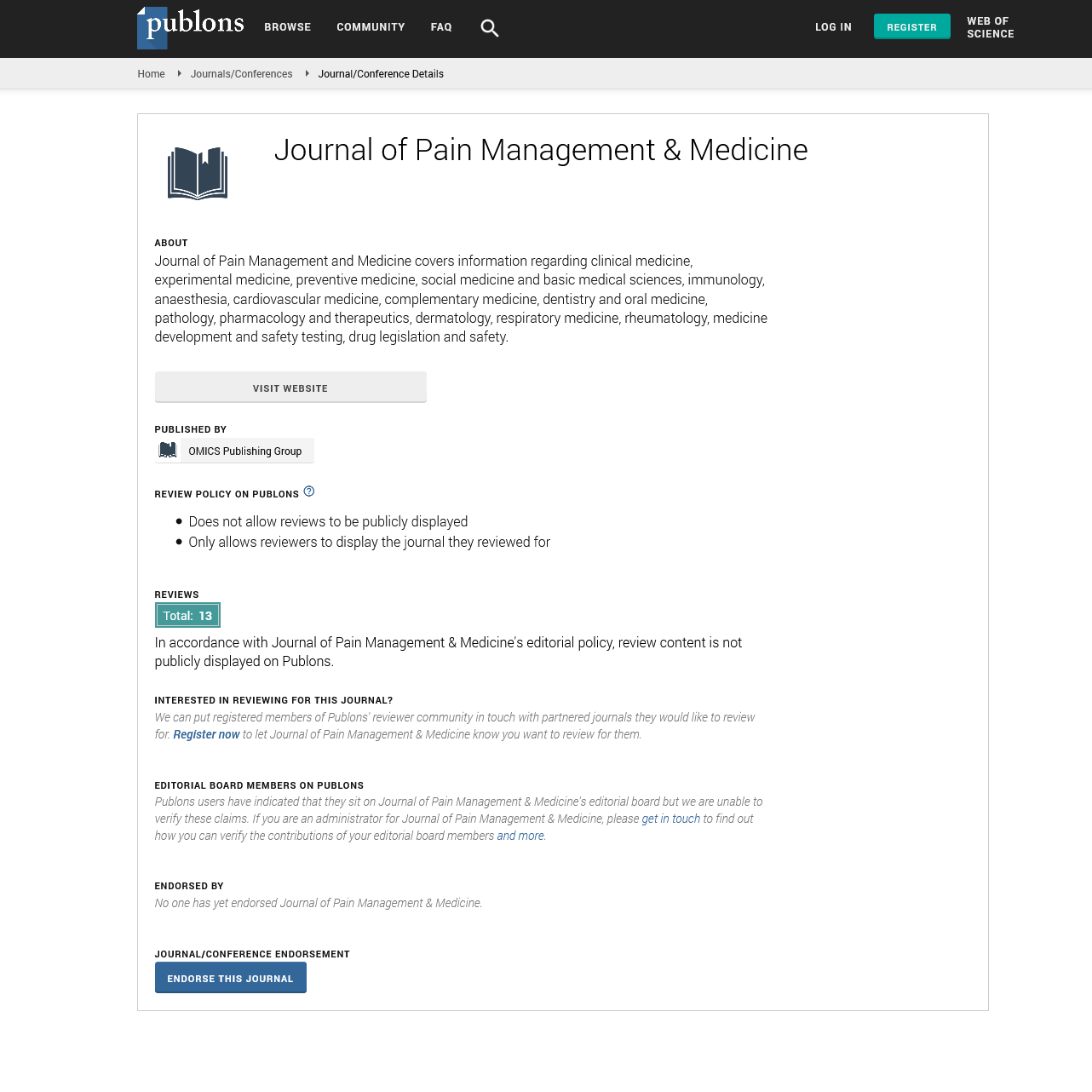Indexed In
- RefSeek
- Hamdard University
- EBSCO A-Z
- Publons
- Euro Pub
- Google Scholar
- Quality Open Access Market
Useful Links
Share This Page
Journal Flyer

Open Access Journals
- Agri and Aquaculture
- Biochemistry
- Bioinformatics & Systems Biology
- Business & Management
- Chemistry
- Clinical Sciences
- Engineering
- Food & Nutrition
- General Science
- Genetics & Molecular Biology
- Immunology & Microbiology
- Medical Sciences
- Neuroscience & Psychology
- Nursing & Health Care
- Pharmaceutical Sciences
Commentary Article - (2024) Volume 10, Issue 6
Advancements in Anesthesia: Enhancinsg Patient Care and Surgery
Anton Nguyen*Received: 28-Oct-2024, Manuscript No. JPMME-24-27638; Editor assigned: 30-Oct-2024, Pre QC No. JPMME-24-27638 (PQ); Reviewed: 13-Nov-2024, QC No. JPMME-24-27638; Revised: 20-Nov-2024, Manuscript No. JPMME-24-27638 (R); Published: 29-Nov-2024, DOI: 10.35248/2684-1320.24.10.302
Description
Anesthesia, an essential component of modern medicine, helps to facilitate operations and other invasive treatments by causing patient painless. It has improved medical treatment, providing difficult procedures while maintaining patient privacy and security.
Types of anesthesia
Anesthesia can be classified into four main types: General, regional, local and sedation. Each type has distinct applications, benefits and risks.
General anesthesia: General Anesthesia, which causes paralysis as well as complete inability to pain, is frequently used for major surgeries. It typically involves a combination of Intravenous (IV) and inhaled agents. Medications such as propofol, sevoflurane and fentanyl are commonly used, ensuring that the patient is insensitive and painless throughout the treatment.
Regional anesthesia: Regional anesthesia blocks sensation in a specific part of the body by targeting major nerve groups. Techniques include spinal anesthesia, used frequently in cesarean sections and epidural anesthesia, common in childbirth. Regional Anesthesia allows patients remains conscious while maintaining the area of surgery without any pain.
Local anesthesia: Local anesthesia affects a specific area of the body and it is commonly utilized in minor surgical or dental operations. Agents such as lidocaine and bupivacaine temporarily block nerve signals in the targeted area, allowing patients to remain fully conscious.
Sedation (conscious sedation): Sedation involves administering medications to relax and calm patients, frequently used in diagnostic procedures such as colonoscopies.
Risks and side effects of anesthesia
While anesthesia is generally safe, it is not without risks. Common side effects include nausea, vomiting and fatigue. Rare but serious complications include allergic reactions, nerve damage (in regional anesthesia) and anesthesia awareness, a condition where patients regain partial consciousness during surgery. Anesthesiologists mitigate these risks by conducting thorough preoperative assessments, taking into account factors such as the patient’s medical history, age and weight. Advances in pharmacology have also led to the development of agents with smaller periods of time and fewer side effects, further improving patient safety.
Ethical and social implications
Anesthesia requires severe ethical considerations, particularly in the case of cooperation. Ensuring patients understand the risks and benefits of anesthesia are essential, especially in cases involving minors or individuals with impaired decision-making capacity. The development of anesthesia has also democratized access to surgery, transforming it from a dangerous experience into a regular part of medical care.
Mechanisms of anesthesia
The fundamental mechanisms by which anesthetic agents work remain an area of active study, but significant progress has been made.
General anesthetics act on the Central Nervous System (CNS), targeting specific receptors and pathways. Most act by enhancing the inhibitory neurotransmitter Gamma-Aminobutyric Acid (GABA), which reduces neural activity, resulting in unconscious. Others, such as ketamine, block excitatory receptors such as Nmethyl- D-aspartate (NMDA) receptors. Local and regional anesthetics work by blocking sodium channels in nerve cells, preventing the propagation of pain signals to the CNS. This mechanism ensures the targeted area remains paralyzed while maintaining the patient's consciousness.
Advances in monitoring and technology
Modern anesthesia is based on advanced monitoring and delivery systems. Anesthesiologists depend on advanced equipment to ensure patient safety throughout procedures.
These include: Measures oxygen saturation in the blood. Monitors heart activity. Tracks carbon dioxide levels in exhaled air, indicating respiratory function. Assess the depth of anesthesia by analyzing brainwave patterns. Anesthetic delivery has also improved with innovations such as computer controlled infusion systems; provide particular medication created to individual patients.
Citation: Nguyen A (2024). Advancements in Anesthesia: Enhancing Patient Care and Surgery. J Pain Manage Med.10:302.
Copyright: © 2024 Nguyen A. This is an open access article distributed under the terms of the Creative Commons Attribution License, which permits unrestricted use, distribution and reproduction in any medium, provided the original author and source are credited.

